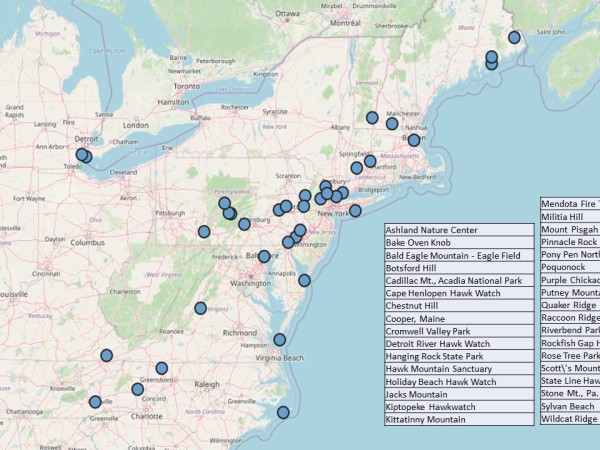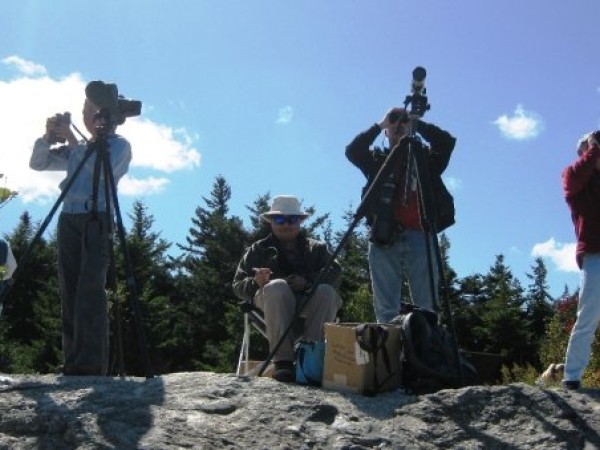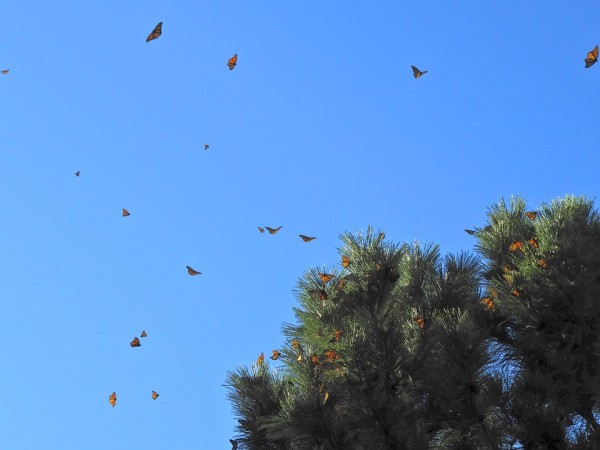Hawkwatchers and Monarchs: A Unique Fall Migration Monitoring Effort
Hawkwatchers Monitor Monarch Migration
By Julie Brown, raptor migration and programs director, HMANA
Every spring and fall, hundreds of hawkwatchers stationed along migration flyways - like ridgetops, river valleys, coastlines and lakeshores throughout the Americas - point their binoculars skyward in efforts to observe, identify and document migrating raptors. These data are then entered into HawkCount.org, a migration monitoring database which is managed by the Hawk Migration Association of North America (HMANA).
HMANA, a non-profit that works to advance conservation through the study, enjoyment, and appreciation of raptors and their migration, oversees the collection of these data from sites spread across North, Central, and South America and supports the raptor monitoring network with educational resources, data support and grants. They also work with partners to analyze and publish long-term, continent-wide raptor population assessments on each species; www.rpi-project.org.
Not Just Hawks
In addition to counting just raptors, lots of sites in the HawkCount network keep track of non-raptor species as well. Waves of migrants - avian or other- follow similar pathways south in the fall and north in the spring alongside raptors. Hawkwatchers, known for being keyed into weather patterns and seasonal changes, often enjoy documenting all species that pass by their watchsites. Common Nighthawks, miscellaneous waterfowl, and an array of dragonfly species to name a few.
Enter Monarchs!
Monarch butterflies are one of those special species that hawkwatchers often associate with hawk migration and there’s a long history of counting them across the continent. Whether intentionally scanning for them, tallying here and there as they drift through a binocular field of view, or trapping and tagging them, hawkwatchers have been counting and admiring these migrating beauties for decades. Many sites enjoy keeping daily totals and comparing year to year as their numbers fluctuate. Most counters comment to some degree on their presence, or absence, in their non-raptor notes or observations in their daily HawkCount reports.
Monarch Migration Program
In efforts to organize these monarch observations and standardize the data collection process, HMANA created a voluntary data field that sites can choose to add to their daily counts. Since 2019, 39 sites have signed up for HMANA’s Monarch Migration Program (mostly along the east coast) resulting in a wealth of information in the HawkCount database about migrating monarch abundance and the routes they favor.
While some Monarch observations have been submitted over the years to MonarchNet from hawkwatch sites, it wasn’t until January, 2024 that the complete dataset of daily and season totals have been shared with Journey North. Now the valuable data collected at hawk watch sites can be used to better understand their migration patterns. Thanks to these sites, which are largely volunteer community science efforts, we can now track the shifting abundance of Monarchs as they migrate. It is our hope that this information may help look at more detailed factors like the effect of prevailing winds, weather (including extreme weather like hurricanes), and climate shifts in the detailed progression of Monarchs. It may also help to answer some long-standing questions about migration, like whether mortality during migration is responsible for the long-term decline of Monarchs.
We’re thrilled to partner with Journey North and hope these migration sightings bring new insight and awareness of these amazing migrants and how we can protect them.
For more information about HMANA’s Monarch Migration Program, please visit the HMANA monarch butterfly monitoring webpage linked here.



